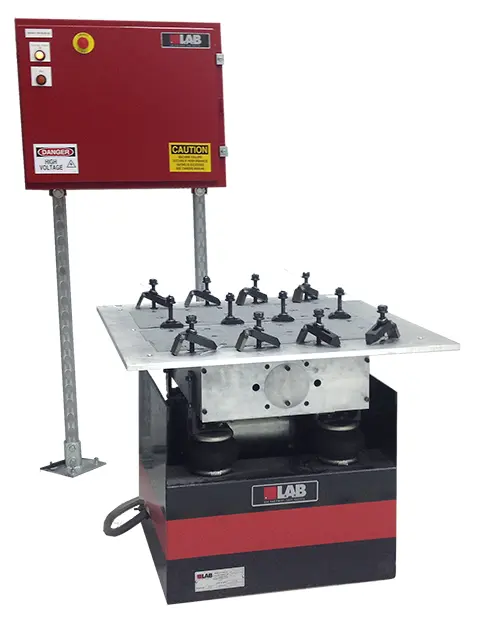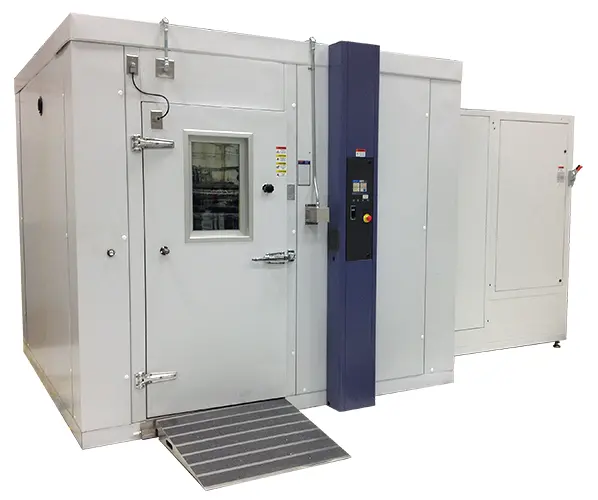Challenging Environments Part II: Testing for Harsh Environments
June 28, 2019Rugged technology withstands everything thrown at it, but what exactly faces these warrior devices often comes across as vague. These five challenging environmental factors and accompanying man-made forces show exactly what guides engineering decisions and how to test against them.
Harsh Environments
Rugged technology may not be one size fits all. Conditions specific to the harsh environments in which devices work set the limitations and determine which military standards should be followed. These conditional limits factor in the natural forces, man-made impacts or circumstantial activity.
Natural forces are some of the hardest factors to design around. Some environments are straightforward; for example, it is only ever going to be cold in arctic areas. However, other locations will present several complications; for example, the desert may experience both extreme heat and extreme cold, forcing devices to have wide ranges of thermal operation capabilities. The complications go on, once the environmental evaluation accounts for climate unpredictability, variable seasons, changing landscapes and other wild-card natural events.
Natural Forces Hard on Technology
- Thermal Conditions
As mentioned previously, thermal conditions include both high and low temperatures. Extreme heat tends to be the most frustrating and damaging. With powered devices or electromechanical movements, thermal energy will be given off during operation. Consequently, if the object sits within a hot environment, the heat will not disperse. As it lingers over the delicate components, individual parts may malfunction or even melt. Thermal engineering studies how to beat the heat through enclosure optimization as well as component selection and placement. - Dirt, dust or other microparticles
Dirt, dust and other particles inhibit proper functions by clogging, corroding, obscuring, drying and contaminating interior parts of a device or damaging user interfaces. Clogging of latching areas or moving parts can lead to disconnection or mechanical malfunction. One way to prevent this is to reduce the number of moving parts, such as fans. As well, keeping the enclosure safe from particles through excellent seals helps to maintain the interior. - Moisture
Moisture doesn’t help anyone except fish and thirsty people. When moisture gets inside an electromechanical device, it can cause corrosion; moreover, moisture can instigate electrical sparking due to its conductive nature. When operations occur in wet areas – along the coast, at sea, in wet climates or in icy conditions – devices must be proofed against that moisture. - Wind
Wind can blow things over, away or into other objects. Rugged devices have constructions that walk the line between heavy and weight-efficient. Furthermore, depending on the wind, it may carry moisture or sand particles. Enclosures with ventilation must have adequate protections in place that don’t funnel air straight into delicate components. - Pressure and Altitude
Pressure and altitude have the most effect on electronic devices. At high altitudes, exposure to different kinds of radiation can occur. These can impact magnetic fields in devices, affecting measurements or sensors, or cause a molecular collision that sparks electrical issues. As well, gas particles that fuel some reactions exist in different densities at high altitudes, which limits reactions. Similarly, pressure or immense changes in pressure – from sea level to seafloor or cruising at 30,000 feet – put different stresses on materials. Under the ocean, high pressures mean that enclosures cannot be inclined to crumpling.
Circumstantial and Man-made Forces
Once a design has been proofed against its harsh environment, it must be tested against circumstantial forces created by the operations around it. These forces include vibration, shock, gravitational pressure and electrical disturbances. Heavy industries like mining, energy, construction, and building or military operations will see the bulk of these forces. Unlike telecommunications, which require remote placements, these industries use rugged technology at the center of activity. Drilling, blasts, engine activity, launches and power station surges are all localized events that could interrupt a device’s activity.
Vibration and shock are two are the most detrimental man-made forces, followed quickly by electrical interference and gravitational pressure. That last force is exclusive to aerospace, and even then, high-altitude jets traveling at extreme speeds. Vibration and shock wreak so much havoc because it can displace enclosure parts such as fasteners, weaken foundations, displace computing components, unscrew screws, force out nails and disconnect attachments. Securely fastened and tightly bolted devices built on durable materials can have long field lives, even among mining operations.
Manufacturing and Testing for Durability and Reliability
Production facilities have many tricks and methodical processes to ensure that rugged designs come out ready to be shipped to the field with all standards met. Between manufacturing systems with little to no errors and testing equipment that can ensure the quality of equipment, industrial operations can take confidence in the durability and reliability of their devices.
Within the facility, the production cycle has many parts that help guarantee a device’s rugged status. For computing interface devices, having a highly automated machine controlling the installation of the essentials starts the process on the right foot. Automated soldering machines can take PCBs and precisely and accurately ensure all components are attached. Through checklists and well-followed rules that reduce the risk of contamination or electrostatic shock, employees can take these interfaces through the ruggedizing steps. These steps include hand-gluing especially heavy parts, to ensure these bits do not become projectiles within the enclosure. They also include applying board-tailored acrylic UL-rated coatings, which protect against fungus, moisture, and mold.

Afterward, quality assurance checks using advanced software-to-hardware testing and simulations determine the integrity of each piece. If something triggers a concern, for example, a failed electrical test, then in-house x-ray machines can examine the inner structures of computing interfaces for potential rough spots. Devices differ on initial tests, but x-ray machines are common tools for low-impact assessments of damage across forms.
Finally, once the inner workings have been certified, they can be assembled within enclosures and tested against a variety of harsh factors. Vibration tables, shock chambers, and thermal chambers are all heavy-duty testing units that measure for some of the most crippling forces technology may face.
Vibration tables use a sliding scale of frequencies, which introduce increasingly intense and faster vibrations, to measure exactly how far the attached device can go. When the device unscrews or cracks or whatever other malfunction shows, that is its frequency upper limit.

Shock chambers frequently include vibration elements as well. However, they tend to be large enclosed areas with an automated weighted arm that drops with increasing force and power. These shocks occur when the dropped arm smashes the surface on which the device rests. A too-powerful shock can rip a device in half, much like a ground shock can cause a foundation to separate. These tests have a range of forces, from jackhammer pounds to artillery and earthquakes.
Thermal chambers test for the operational temperature limits of a device. They come in different sizes, to account for the volume and size of tested objects. Depending on the model, a thermal chamber may do thermal shock, which is a sudden change in extreme temperatures, or thermal soaks. Thermal soaks tend to be the most indicative of a device’s ruggedness. In these trials, engineers see if devices will run at peak functionality and reboot as temperatures progress through and plateau at extreme thresholds.

For example, a thermal chamber may start at room temperature and then lower the operating conditions until the chamber hits the lowest threshold requested. From there, the devices will “soak” in the cold for a predetermined time, being tested for functionality, before shutting off for the extended soaking. If the technology turns back on and continues working through the increasing temperatures, it meets that rugged standard.
Sealevel’s Rugged Technology
Sealevel is proud to be American-made in one of the most advanced facilities in the US. All our products get designed, produced and tested in-house. Our near-constant feedback loop between engineers, manufacturing floor leaders, and testing technicians leads to an effective process that guarantees the quality of each interface. We’re proud to offer rugged technology that sets the standards.